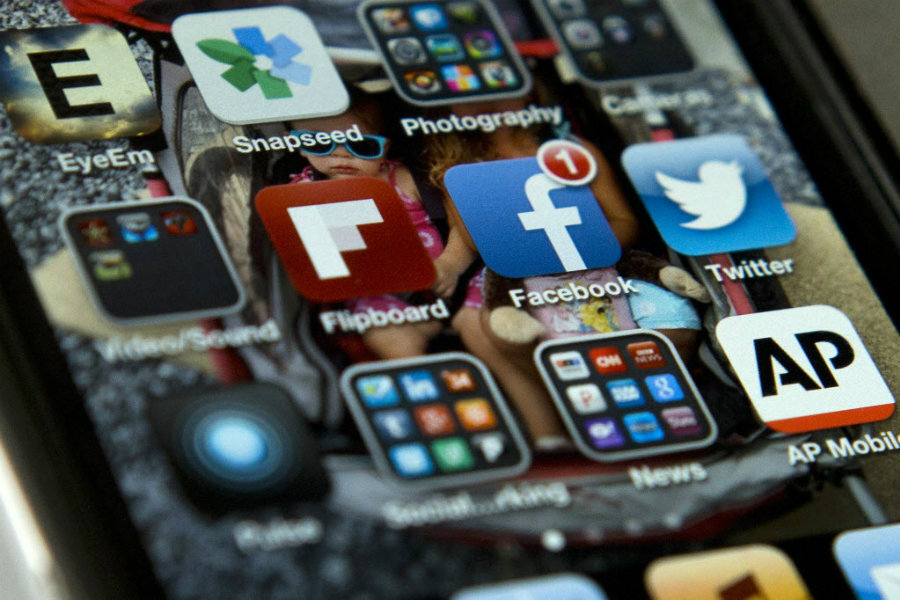Twitter's new donation tool: How does it stack up in era of big money?
Loading...
Supporting your favorite presidential candidate just got easier, with Twitter’s announcement Tuesday that users can now tweet cash donations directly to political campaigns.
The new feature aims to make mobile donations more seamless and spur more individual donors to contribute online, making it a potentially powerful tool for campaigns looking for new ways to expand their small-donor base, some say.
But in an era where big money reigns supreme – as of August, super political action committees accounted for $2 of every $3 raised in the 2016 presidential race – how much real impact can a tool that encourages small donations have on a campaign’s success?
“Anything that makes it easier for people to click and give money is helpful” to a campaign, says Brendan Glavin, data and systems manager at the Campaign Finance Institute (CFI), a nonpartisan money-in-politics think tank in Washington.
Although super PACs are well known for their ability to receive unlimited contributions for a political campaign, they don’t necessarily indicate voter support the same way that individual donors do, he says. “It means I’ve found a big benefactor,” not extended my donor base, Mr. Glavin explains.
Funds in super PACs are also, in some ways, less efficient than those from small donors because Federal Election Committee regulations limit how super PAC money can be spent in a campaign, he notes.
Case in point: former Texas Gov. Rick Perry, who on Friday became the first candidate to drop out of the presidential race. Mr. Perry was in the single digits in national polls, but what really took a toll were his money issues. Although he had nearly $17 million in super PAC funds, the money could not be used to pay his staff. As of June, he had raised about $1 million from small donors, hardly enough to cover the costs of running a campaign.
At the same time, some of the most successful candidates so far have recognized the impact of small donations, defined by the FEC as contributions of $200 or less. As of June, 77 percent of the campaign funds for Democratic candidate Bernie Sanders came from small donations, the CFI reports. Ben Carson’s and Donald Trump’s Republican campaigns have also benefited at 65 and 44 percent, respectively.
“It’s not a binary thing where one [form of funding] will the replace the other,” Glavin says.
Enter Cashtag – a unique Twitter URL for each campaign that comes with a “contribute” button. The new tool does away with the clunky links and separate browser windows that campaigns have used to obtain online donations, reducing the friction between candidates and would-be donors on social media.
“This is the magic question I’ve been getting since early 2012,” Jenna Golden, head of political ad sales at Twitter, told The New York Times, referring to how many campaigns have long dreamed of taking financial advantage of Twitter surges. “It makes perfect sense to add a donate capability,” she said. “It’s really the perfect marriage.”
For some candidates, that may well be true.
“This is going to be most beneficial to candidates who have strong grass-roots support but have not yet tapped into [it],” says David Karpf, an assistant professor at George Washington University’s School of Media and Public Affairs in Washington.
Indeed, Senator Sanders was among the first to use the tool. Republican candidates Scott Walker and Rick Santorum have also tweeted donation requests ahead of the second GOP debate Wednesday night.
Yet despite the initial interest in the feature, some experts doubt that such digital applications will transform how candidates finance their campaigns – at least in this presidential race.
History has shown that new technologies and digital strategies introduced during a campaign have done little to change how voters behave through the course of the election season, says Jeanne Zaino, a political science professor at Iona College in New Rochelle, N.Y.
“Every time we see a Twitter or another form of new media, there’s a lot of excitement out there that it will transform the way we do campaigns,” she says. But the changes tend to occur “at the top, not at the bottom,” she adds, referring to groups and individuals who are already active in the election process.
Among Twitter users today, Professor Zaino says, the most likely individuals to donate to campaigns using the new feature are the same ones who are most likely to donate, period.
Brian McShea, a junior at Berklee College of Music in Boston, says he has contributed to campaigns before via text, and would do so this time using Twitter’s new tool. “I would say it’s a good investment,” he says.
Though he has not donated before, Dan Howard, another Berklee student, appreciates the feature’s convenience. “It seems easier,” he says.
President Obama, who during his 2008 campaign received about half of his $600 million haul from small donations, may have shown that it’s possible to benefit financially from online tools that mobilize people who otherwise would not participate.
But the campaign finance system has since changed drastically, shifting power more than ever toward the elite donor class, which makes Mr. Obama’s success difficult to replicate, Professor Karpf says.
For small donors to make an impact on presidential campaigns, that system has to change from the inside out, he adds. A renewed focus on public funding programs – which use federal funds to finance a candidate’s primary and general election campaigns – could make a significant difference, he says.
“I’m all for new tools,” Zaino says, “but the energy spent in these things might be better used elsewhere.”








